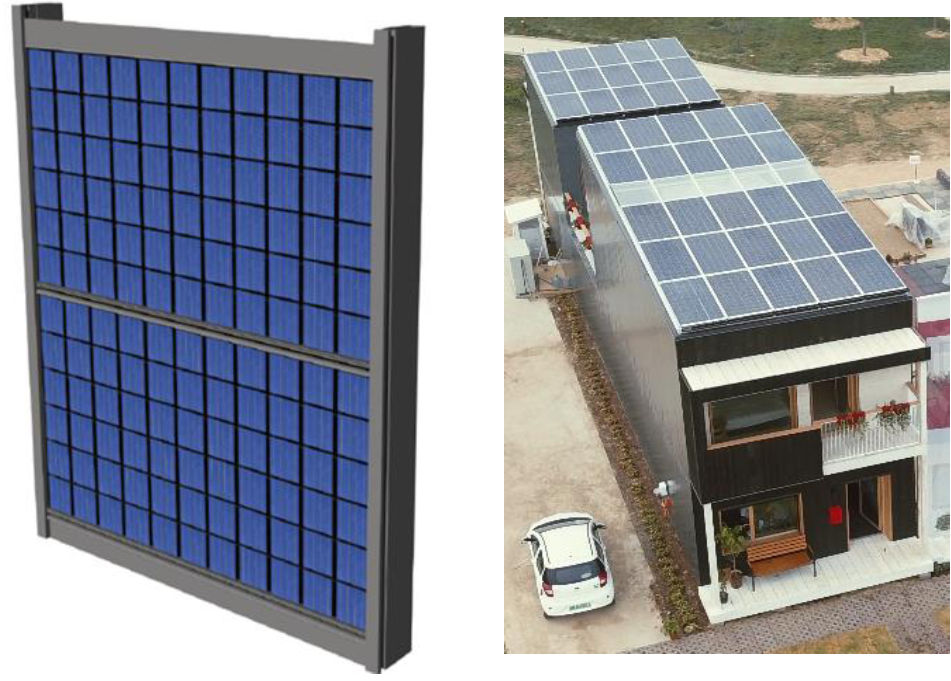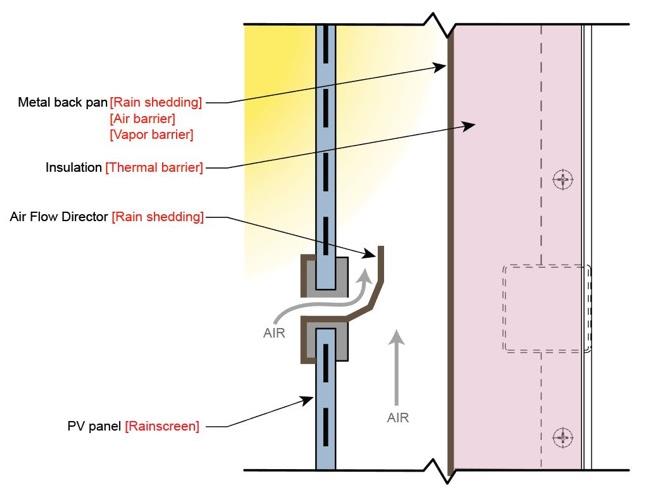Brief Concept Description
The Modular BIPV/T system allows the full integration of a photovoltaic/thermal system into the building envelope maintaining the potential of modular/unitized fabrication. The design of a typical curtain wall is here altered, so that an air channel is created between the PV layer and the insulated back surface and it is possible to cool down the PV layer collecting useful heat. In this case, multiple fresh air intakes can be used to boost the thermal performance of the system. The modular BIPV/T system can be applied to the opaque part of curtain wall facades, but is also suited for roof applications, as shown below.
A prototype of this system was developed at Concordia University in collaboration with Unicel Architectural and Canadian Solar (Figure 29, left) and a variant of such prototype was incorporated as a roof BIPV/T system in the Solar Decathlon House designed by TeamMTL for the event in China 2018 (Figure 29, right).

Figure 29. Architectural integration of BIPV/T in a curtain wall design on the left and example of the integration of the BIPV/T module in a roof (Solar Decathlon House, China 2018) on the right.
Architectural and Technological Integration into the Envelope
This system is designed for full façade/roof integration as it replaces traditional envelope elements. It can be either incorporated as stick-built (assembled on-site) or it can be prefabricated in modular form. The PV panels are supported by pressure plates, point supports on a metal frame and an air gap is left to separate them from the rear surface. The layers on the back of the PV panels guarantee air and water tightness as well as thermal insulation. Figure 30 shows the cross section of the experimental BIPV/T curtain wall.
Integration into the Building: System and Comfort
Depending on the application and the outlet air temperature, the system can either deliver pre-heated fresh air either directly to the living space or convey it to a heating system (i.e. a heat pump) that works at a high COP levels, with a consequent reduction of the cost for space heating

Figure 30. Cross section of the BIPV/T curtain wall system.